Most collectors set limitations on themselves. They only collect a certain scale, one of each species, certain animal groups, certain brands, etc. With how spoiled for choice we’ve become this makes sense, very few collectors have the luxury of buying and displaying everything, we need these self-imposed rules to assure we remain responsible collectors. My collecting is largely kept in line by taking space and cost into account, and I try not to collect too many examples of a given animal. But when PNSO announced their Camarasaurus, I knew I would be breaking all my rules for it.
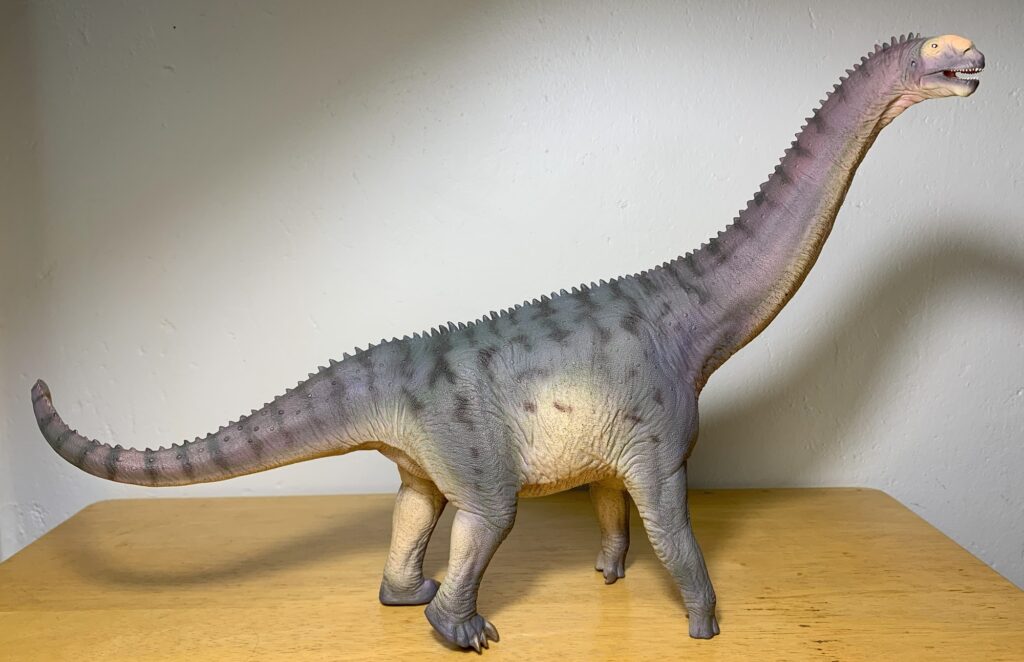

You see, Camarasaurus is my favorite sauropod. I have several models of it already. The Safari Camarasaurus represented my definitive model of the genus, but I still display my Carnegie Camarasaurus and have the Dinotales figure from Kaiyodo. My Waiphoon Camarasaurus has been passed on to my kids. I didn’t need another Camarasaurus but while I’ve passed on many sauropod genera I don’t have represented at all, I needed to find room in my cabinet for this one. I guess that’s how you know when a dinosaur is your favorite.
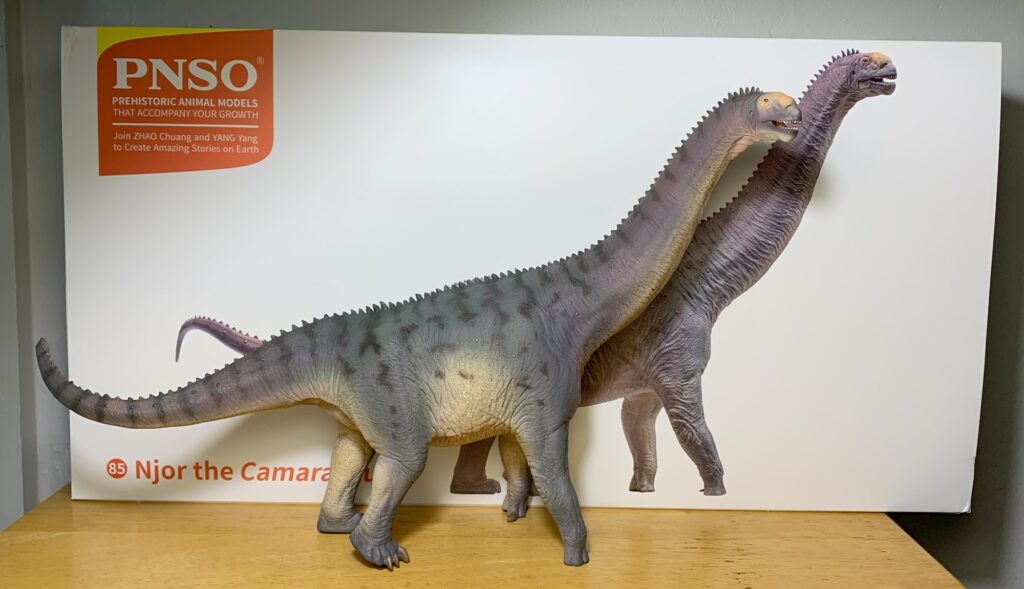
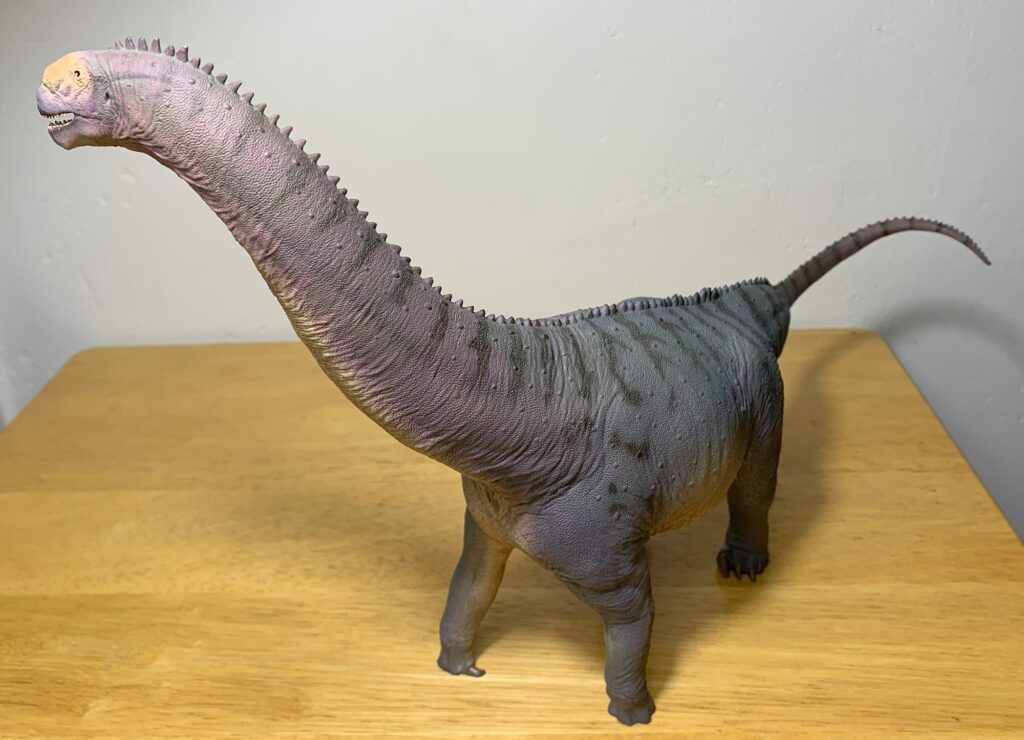
To be fair, the PNSO Camarasaurus is a magnificent figure that’s probably difficult for any collector to ignore. It might be one of the best sauropod models ever made. Haolonggood released a Camarasaurus around the same time as this one, but it was easy for me to shrug that one off. Not so with this one.
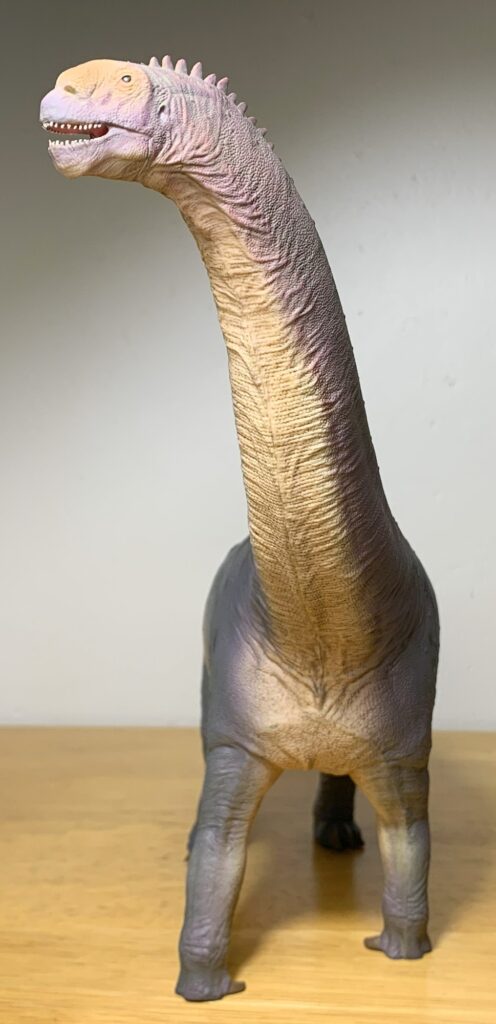
There are a few described species of Camarasaurus, and this one is meant to represent C. supremus, the type species for Camarasaurus and the youngest and largest species. It would have lived 145 million years ago during the Late Jurassic, in North America. There is really no reason that it cannot represent a different species however, and scale conscious collectors might want it to represent a smaller one.
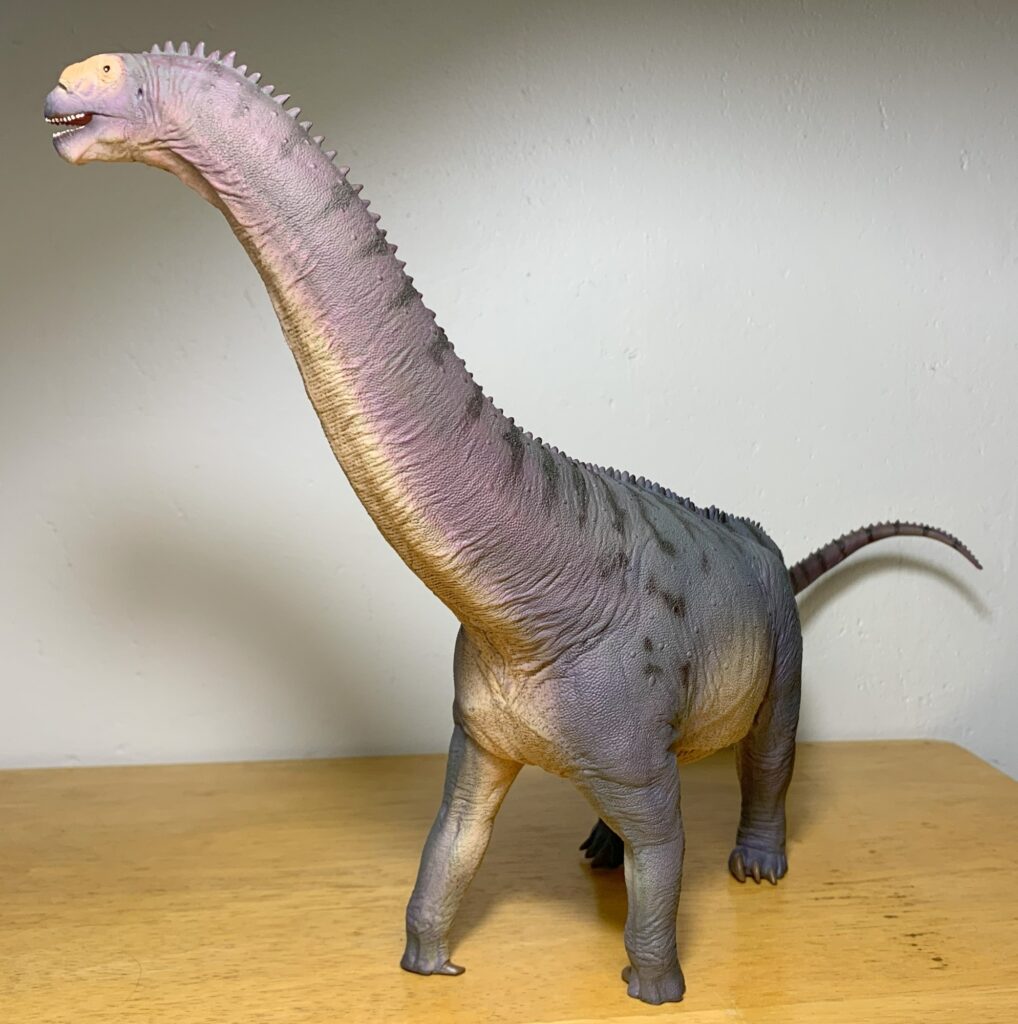
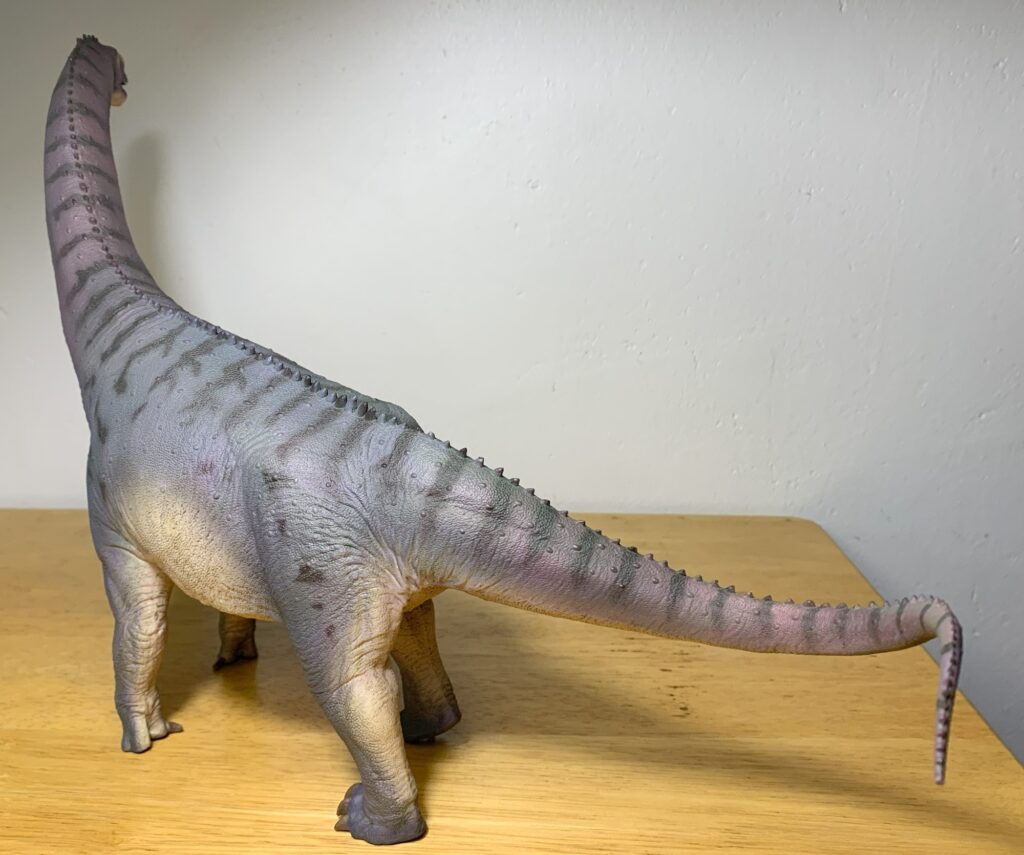
Njor stands 9.25” (23 cm) tall to the top of the head and measures about 16” (40 cm) long when measured in a straight line. Along its various curves it measures about 19” (48 cm). PNSO advertises the figure as being 1/35 in scale. To be 1/35 the figure would have to be scaled down from an animal measuring 56’ (17 meters). Using Dinosaur Fact & Figures: The Sauropods as a reference we get a length of 52’ (16 meters) for C. lentus (the most common species), and a length of 65’ (20 meters) for C. supremus. As you can see, the figure scales better with the smaller C. lentus. Scaled down from 65’ we get a scale closer to 1/40. If you want the figure to represent the 48’ (14.9 meters) C. grandis then you get a scale of 1/30.
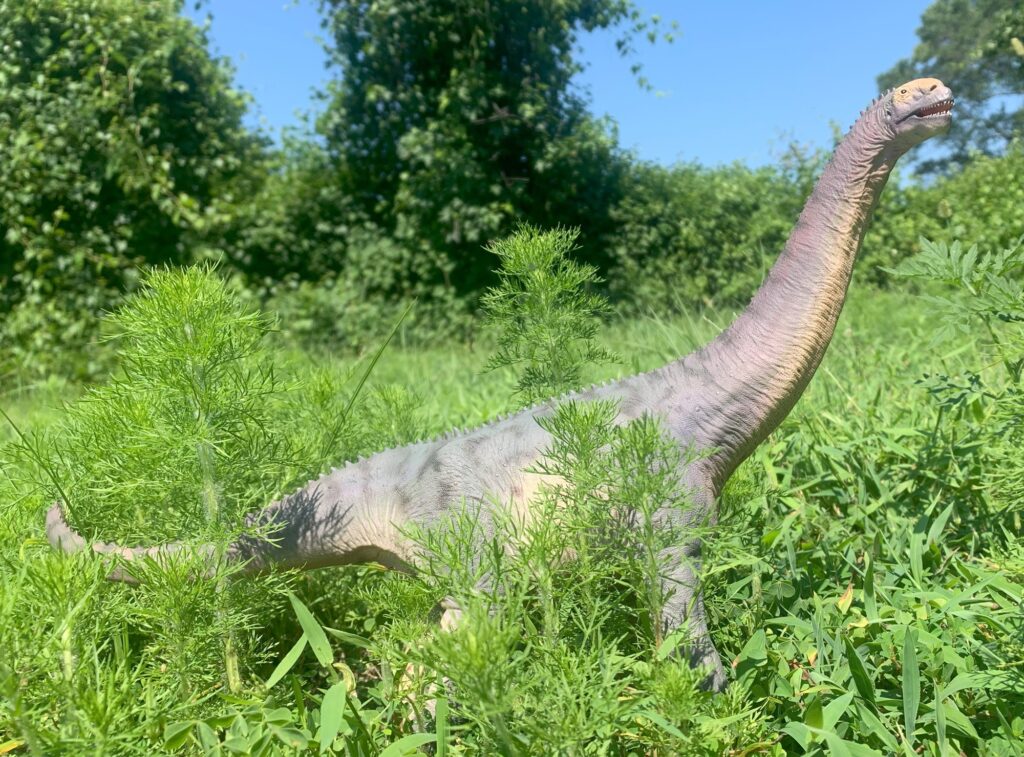
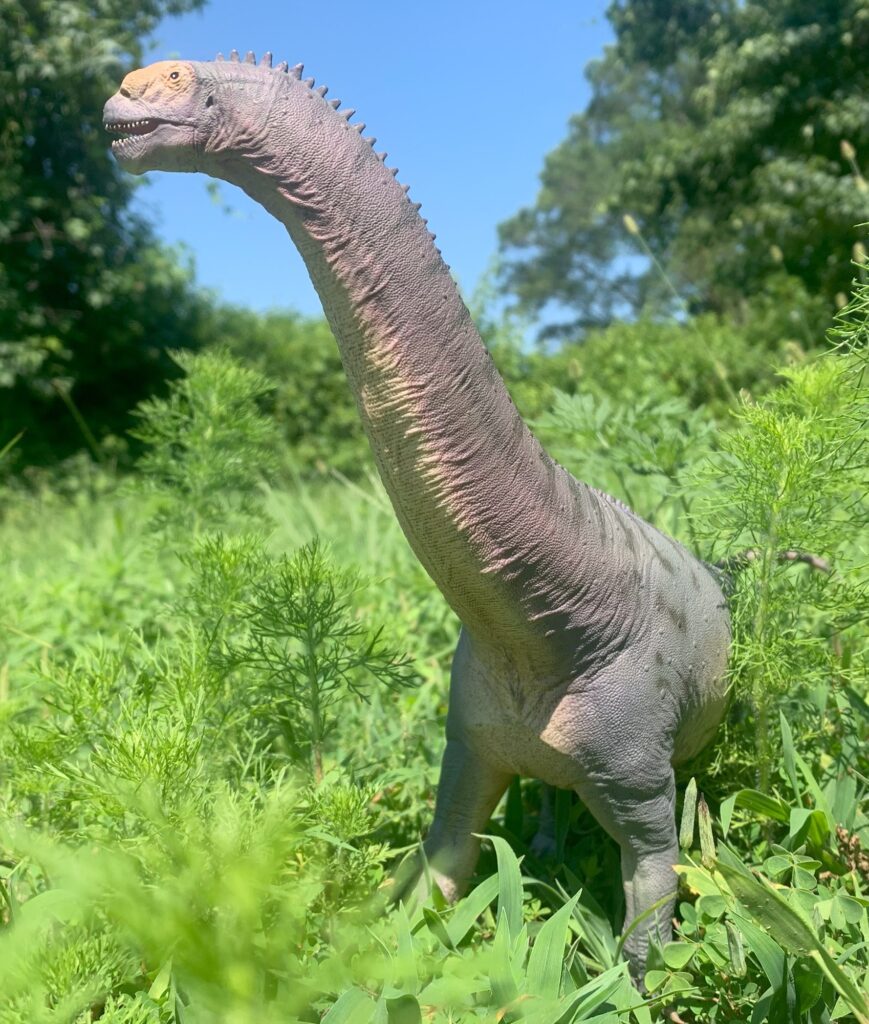
The figure is posed sturdily on all fours with the right hindlimb slightly lifted and the limbs widely spaced apart. The neck is gently curved towards the right and the tail sweeps rightward and down, then upwards and to the left with the tip pointing down. This is a robust, powerful-looking animal that would make any theropod think twice about tangling with it.
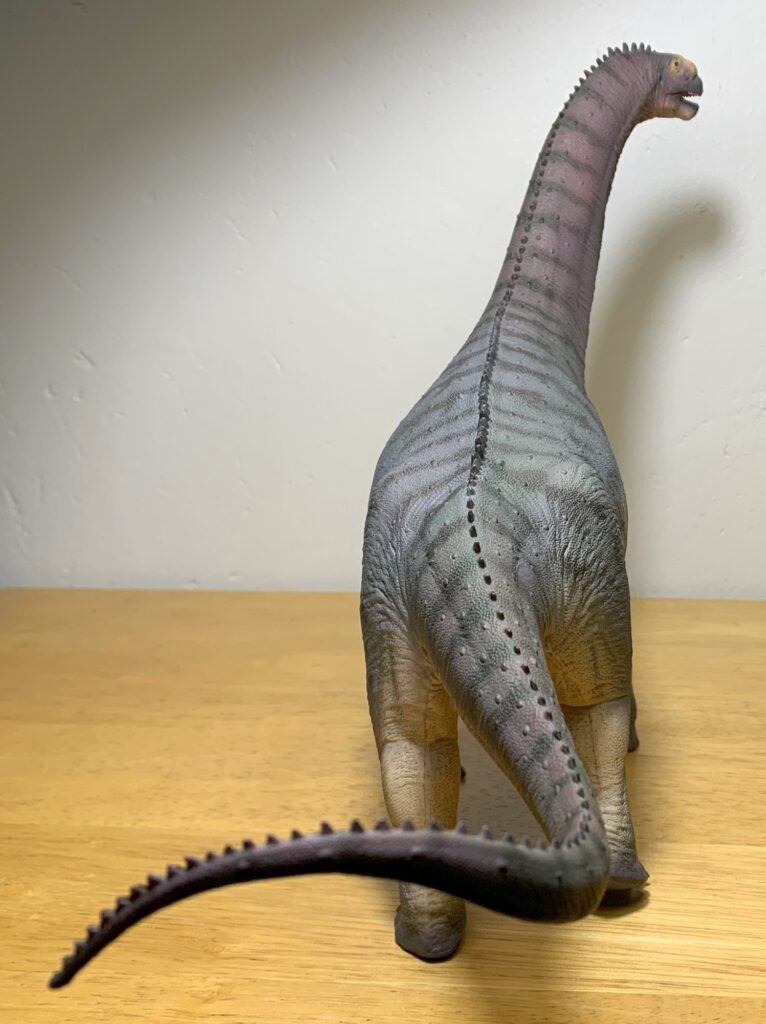
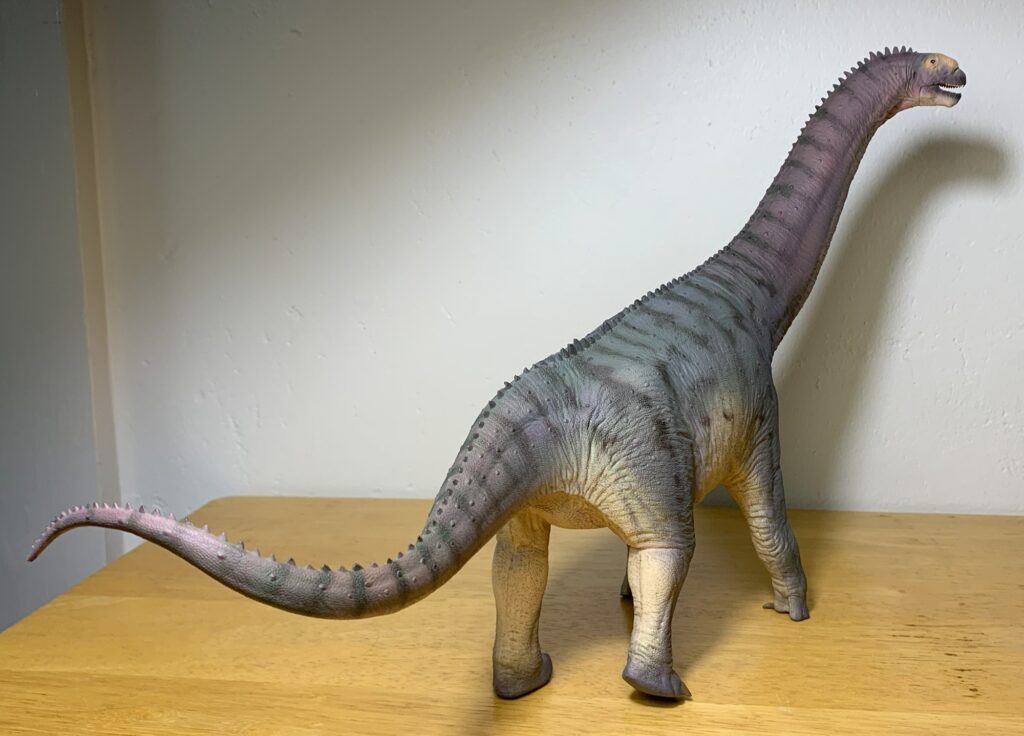
The neck is exceptionally thick, much thicker than Haolonggood’s model and that’s one of the reasons I generally prefer PNSO’s sauropods over theirs. The barrel shaped torso is also wider than that on HLG’s. The short tail has a deep and muscular base that sharply transitions to a thinner and spindlier tip. Grooves along the length of the neck and tail highlight the underlying musculature.

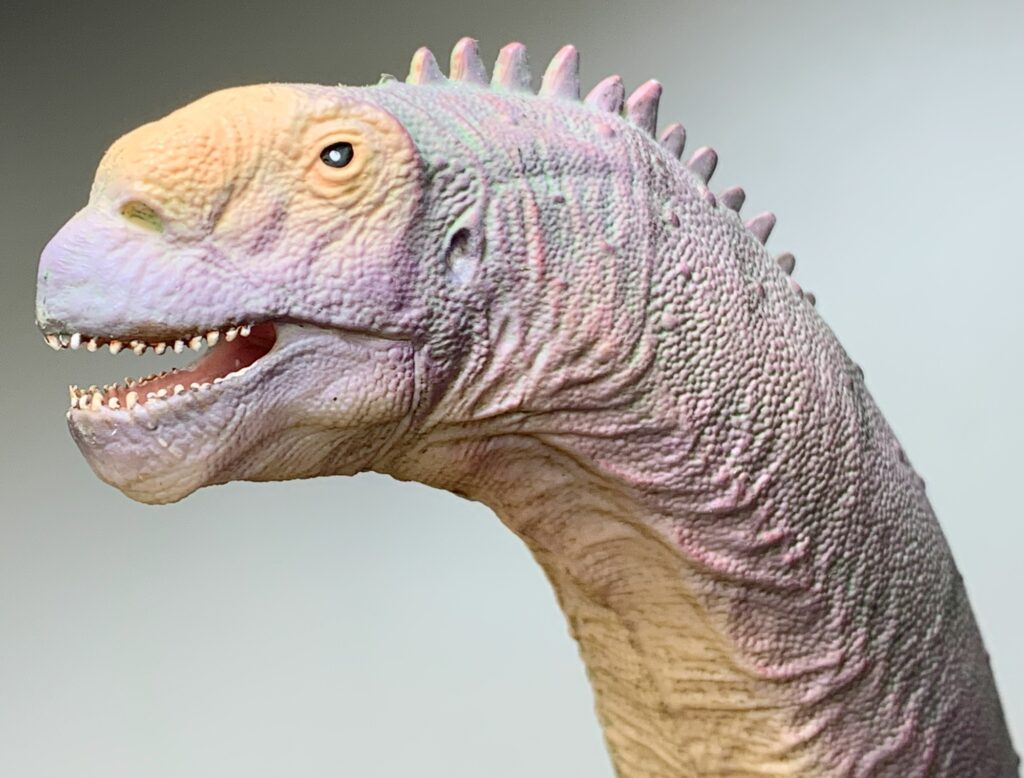
The mouth is slightly open and nicely displays the individually sculpted, spatulate teeth. The head is square shaped and blunt with prominent resonating sacs sculpted over what would have been absurdly large nasal openings. This added soft tissue also gives the figure an edge over its contemporaries. Although difficult to discern, it does appear as though a beak is sculpted along the jaws, a feature that Camarasaurus is theorized to have had. The outline of the lower jaw is nicely accentuated, and the nostrils and ear openings are well defined and deep. The face is detailed with a pitted texture and wrinkling can be seen around the nasal sacs, orbits, base of the skull, and along the underside of the neck. Unfortunately, there is a seam around the lower jaw that’s quite visible.
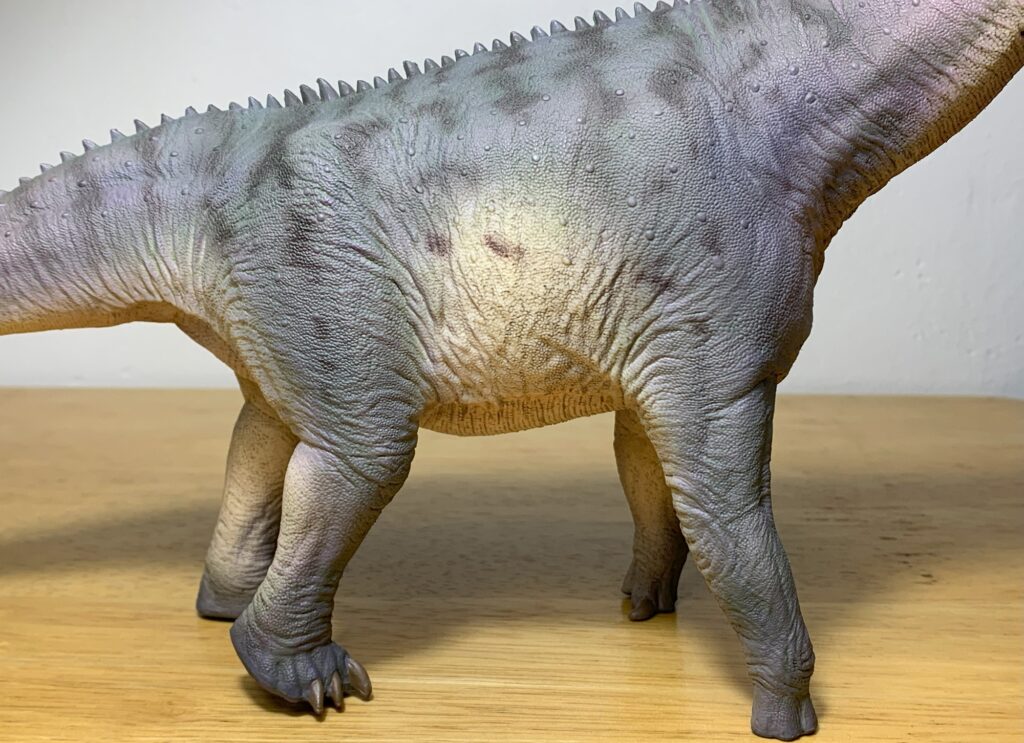

The long forelimbs and prominent shoulder blades are mostly hidden under flesh, with rolls of loose wrinkled skin cascading down over the elbows and the rest of the forelimbs. It’s still easy to see that the forelimbs are longer than the hindlimbs, reflecting the macronarian condition. The forefeet are encased within fleshy horseshoe shaped mitts, with the only visible claws being the spur-like first digits. The hindlimbs are similarly muscular, fleshy, and well padded, with five visible digits on each with only three digits possessing outward curving claws. This is of course all very scientifically informed.
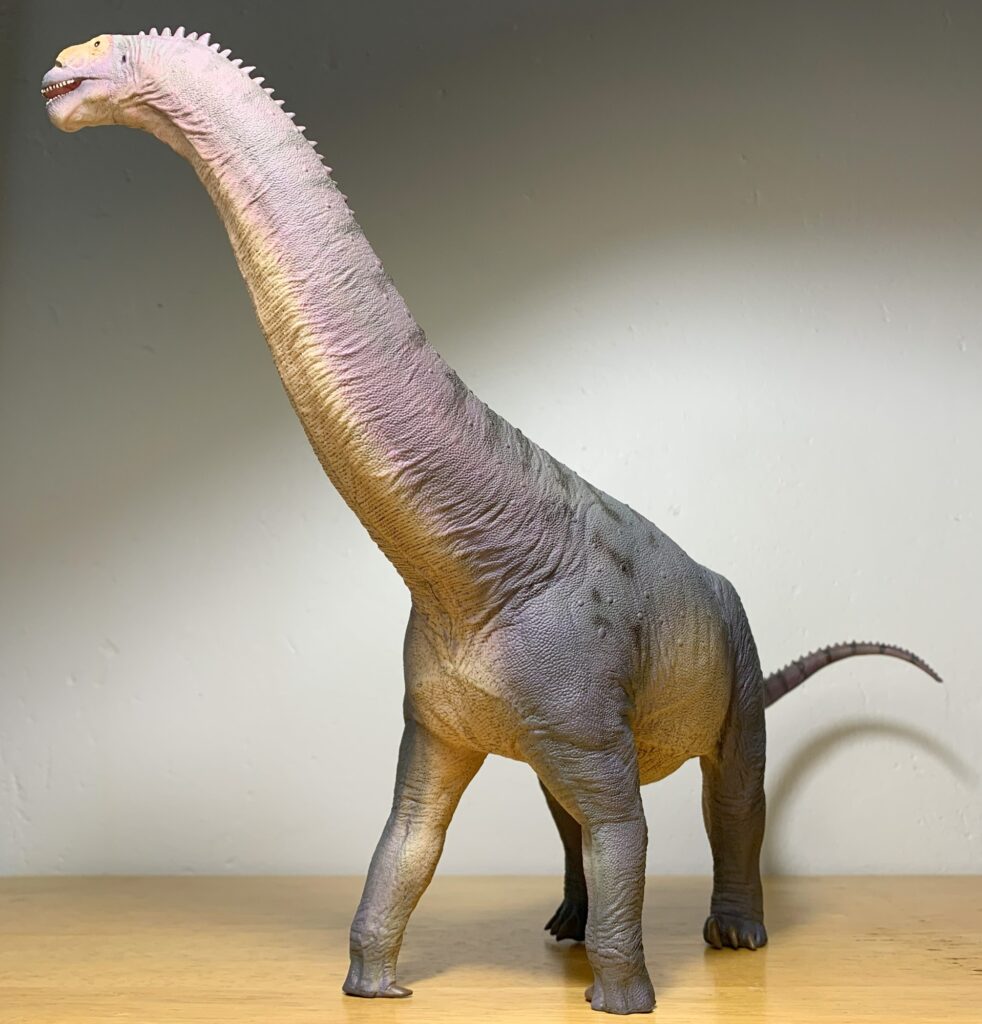
The figure is covered in fine pebbly scales with larger feature scales scattered about and a row of spines running down the midline of the back. The scales along the underside of the neck and belly are more uniform and grid-like than those elsewhere. Sagging skin folds adorn the lower sides of the torso and skin creases are sculpted along the bases of the limbs and tail. The skin is stretched taught in places where the limbs are pulling away from the body and bunched together in places where they aren’t. The cloaca is given extra special treatment with a puckered look and muscular detail around it. I don’t think I’ve ever seen a more meticulously detailed dinosaur vent.

The figure is mostly blue gray in color with a pale tan underside. The neck and much of the tail are purple and gradually fade off nearer the torso. The nasal sacs and orbits are orange with a hint of green and the eyes are black with specks of white eye-shine. Dark vertical stripes run down the neck, along the back, and down the tail and there are some random splotches and squiggles along the flanks. I like the color choices, and transition from purple to blue gray, but I am mighty tired of stripes and squiggles on my dinosaur models. That said, PNSO has been experimenting more with colors and patterns so I’m mostly just happy it’s not brown with brown stripes, and there’s no denying that the paint application and blending is fantastic.
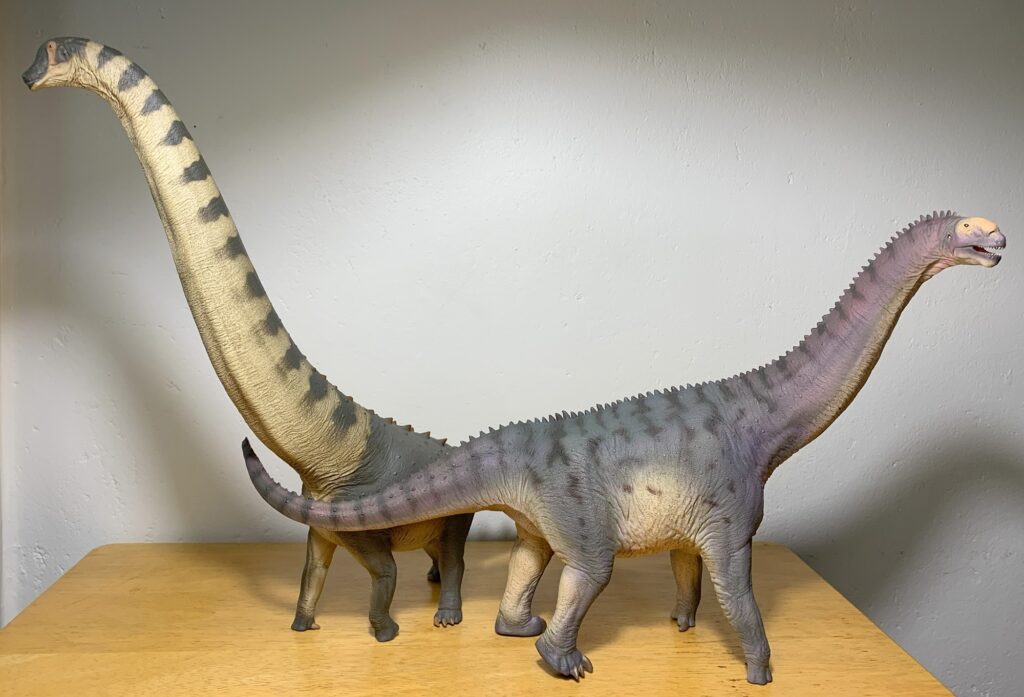
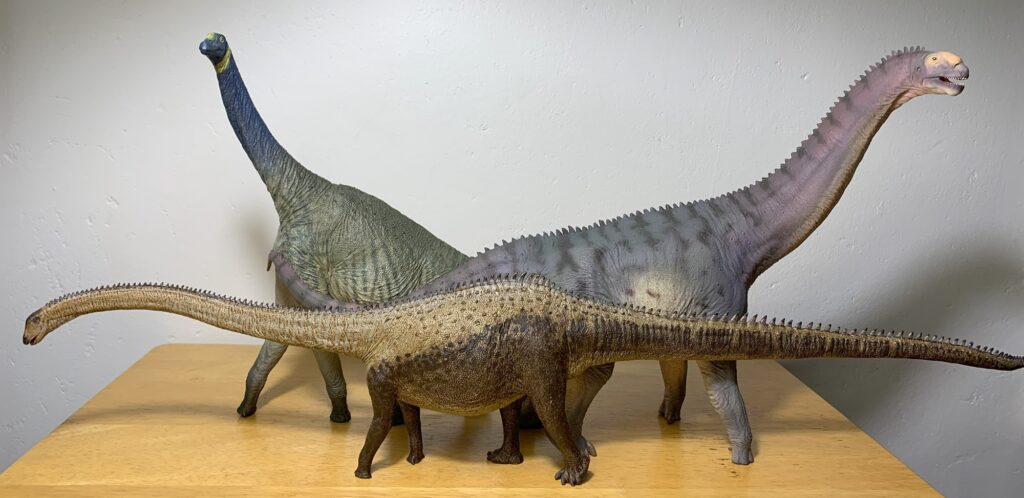
The PNSO Camarasaurus is a big, imposing model, that beautifully illustrates what makes this underrated sauropod so impressive. Although there are a respectable number of Camarasaurus models to choose from, and they’re all excellent, this one is a step above the rest. It is hard to believe that 18 years passed between the Safari Carnegie Camarasaurus and the Wild Safari Camarasaurus and then within just a single year we’ve gotten two new ones from two different companies. This hobby has grown beyond expectation, don’t ever take it for granted! Njor the Camarasaurus is currently in production and widely available for about $75.
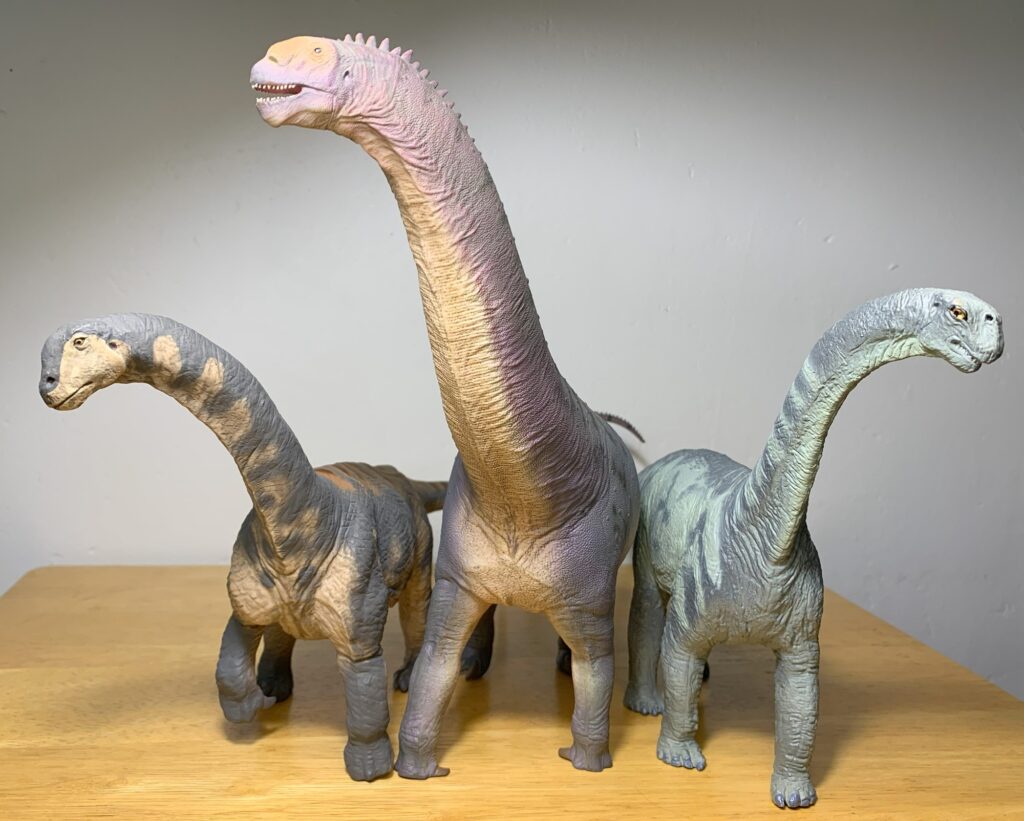
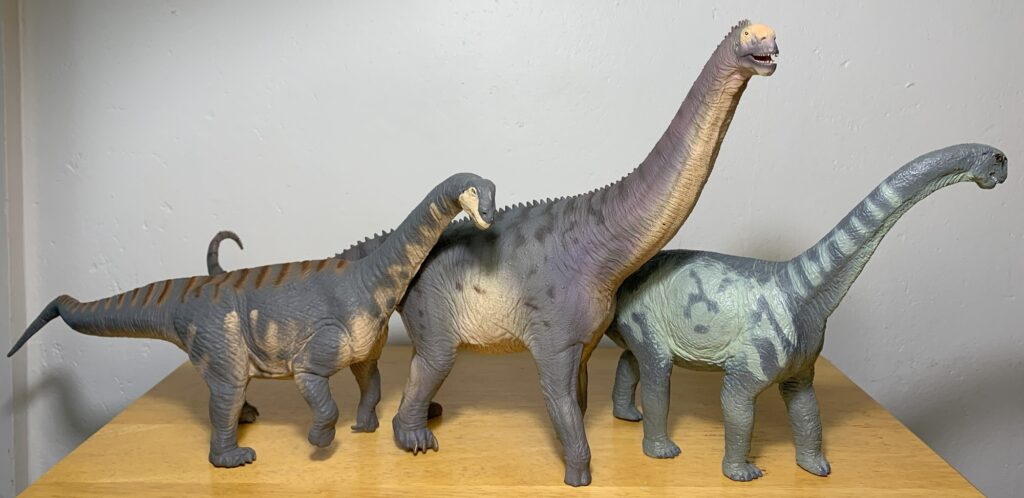
Disclaimer: links to Ebay and Amazon on the DinoToyBlog are affiliate links, so we make a small commission if you use them. Thanks for supporting us!





You can never have too many figures of your favorite dinosaur. Good review.
Agreed! And thanks!
While I am more than content with the 2019 WS version, there is no doubt this is an impressive model!
If it weren’t a favorite dinosaur of mine I could have probably contented myself with Safari’s. I certainly tried!
If anyone thinks that 75 USD is too much to pay for a non-megasauropod, this review should convince them that this is the supreme exception. As much as I like my Wild Safari one (and I also have the old Carnegie too), this is an exceptionally fine figure, surpassing its predecessors and the HLG too. The high praise for this Camarasaurus is no exaggeration.